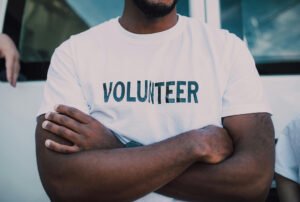
March 27, 2020; Wired
NPQ has spent a great deal of time and ink over the years on libraries serving as community heroes even when everyone else has shut their doors. They remain heroic even as libraries across the United States are closing their doors in an effort to curtail the spread of COVID-19 and flatten the curve, providing as much as they can in a remote way.
The Library of Congress set the pace relatively early by closing its facilities indefinitely on March 11 and canceling sponsored programming through mid-May. The American Library Association’s executive board followed with its own recommendation that libraries cease public operations to protect employees and patrons. Since then, thousands of libraries have either chosen or been forced to close.
According to Jennifer Pearson, director of Tennessee’s Marshall County Memorial Library, there was ultimately little choice: Remaining open would do more harm than good in the face of a highly contagious virus spreading undetected.
Concern stems from libraries’ unique role as inclusive, high-volume community hubs offering free public programs and services that often go beyond borrowing books. NPQ has written before about the enduring necessity of libraries and their adaptability to changing community needs. Workforce development offerings prepare job seekers with resume support and career mentoring. Young adults receive tutoring, college prep, and life skills training along with access to maker spaces. People experiencing homelessness can enjoy shelter without fear of reprisal. One can even check out kitchenware, seeds, and Instant Pots. Then, of course, there’s internet access.
Now, due to the social distancing necessitated by COVID-19, these services are severely diminished or altogether absent. However, libraries’ sudden mass closure has forced them to seek innovative ways to connect with patrons. Some are expanding their digital resources, including e-books, movies, music, and podcasts, while others are livestreaming children’s programming. These resources do require a reliable internet connection, but libraries are exploring workarounds like extending free wi-fi into the parking lot or donating books to homebound students and seniors through meal delivery programs.
Sign up for our free newsletters
Subscribe to NPQ's newsletters to have our top stories delivered directly to your inbox.
By signing up, you agree to our privacy policy and terms of use, and to receive messages from NPQ and our partners.
Pivoting how services are delivered is a central theme in the current pandemic and a large part of the conversation involves equitable access to digital tools. A move to remote, virtual work; a reliance on ordering and food delivery apps; streaming films instead of going to the theater; and indeed, checking out and reading Harry Potter online all figure into this digital shift.
“Great stories are essential during times of crisis—and especially a crisis like this one, with millions of Americans forced to stay home,” writes Sari Feldman for Publishers Weekly. “But perhaps this crisis—for the public, and for lawmakers—will finally highlight the importance of libraries and schools being able to offer digital content.”
Such rapid response to an evolving crisis can backfire. Internet Archive’s suspension of a waitlist for 1.4 million e-books in its lending library, dubbed the “National Emergency Library,” was initially lauded as a benevolent gesture towards an increasingly isolated population. It has since come under sharp criticism from numerous authors and publishers for copyright infringement, a long-standing accusation against the organization, and for depriving authors of income during a period of economic upheaval.
Nonprofits are being tested in similar ways as they provide services while adhering to CDC guidelines, cancel in-person fundraising events, and struggle with dwindling volunteer pools. Those that can are leaning heavily on technology for virtual conferences or online auctions. Regardless, the sector is feeling a strain on sustainability as it attempts to meet heightened demand for services, including those lost to library closures, amid rapidly dwindling resources. As NPQ reported earlier this week, nonprofits nationwide are laying off or furloughing unprecedented numbers of staff in a trend that may continue through April.
As libraries navigate the next few weeks, if not months, of limited capacity, the lessons they learn and the tools they develop could prove invaluable to the social-serving sector. There are already heartening accounts of libraries using 3-D printers to create face masks for community members and health care workers, illustrating that these institutions continue to function as a crucial community resource despite shuttered doors.
The centralization of free community programs, services, and resources, along with their sheer ubiquity, position libraries in such a way that replication or replacement will be difficult should long-term contingencies, with assistance from philanthropy and local and federal government support, be disregarded. Their solutions to service-provision challenges will be critical to weathering the pandemic and surviving what comes next.—Drew Adams











